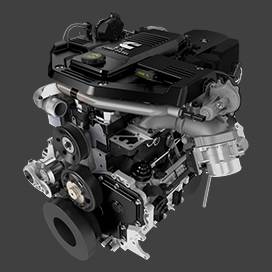Dec . 17, 2024 04:18 Back to list
how to get brake drum off
How to Get a Brake Drum Off
Removing a brake drum can be a straightforward task if you have the right tools and a basic understanding of brake components. Whether you’re performing a routine maintenance check, replacing worn-out brake shoes, or inspecting the drum for wear and tear, knowing how to properly remove a brake drum is essential. In this article, we’ll go through the step-by-step process of getting a brake drum off.
Tools You Will Need
Before starting the removal process, gather the necessary tools and materials
1. Jack and jack stands To lift the vehicle safely. 2. Lug wrench For removing the wheel. 3. Brake drum puller This tool helps to remove tightly fitted drums. 4. Ratchet and socket set For loosening and removing bolts. 5. Brake cleaner To clean the drum and other components. 6. Safety goggles and gloves To protect yourself during the process.
Step-by-Step Process
Step 1 Prepare Your Vehicle
Ensure your vehicle is parked on a flat, stable surface and engage the parking brake. Loosen the lug nuts on the wheel of the drum you want to remove, but do not take them off yet.
Step 2 Lift the Vehicle
Using your jack, lift the vehicle high enough to place jack stands securely beneath the frame. Once the vehicle is stable, remove the lug nuts completely and take off the wheel to expose the brake drum.
Step 3 Inspect the Brake Setup
Before removing the drum, take a good look at the brake assembly. If the drum has a retaining screw, you will need to remove it using your ratchet and socket set. Make sure to note the position of any springs or components, as they will need to go back in the same way.
how to get brake drum off

Step 4 Try to Remove the Drum
In many cases, the brake drum will slide off without much effort. If it doesn’t budge, you may need to tap it gently with a hammer to loosen it. Be careful not to hit it too hard, as this could cause damage.
Step 5 Use a Brake Drum Puller
If the drum remains stuck, it’s time to use a brake drum puller. This tool applies even pressure around the drum, helping to pull it off slowly and safely. Make sure the puller’s arms are securely attached to the drum, then begin turning the central screw. Go slowly, checking frequently to see if the drum is loosening.
Step 6 Clean the Assembly
Once the drum is removed, take the opportunity to clean the brake assembly thoroughly using brake cleaner. This helps to remove any debris and old brake dust that could affect performance.
Step 7 Inspect the Components
Inspect the drum and the brake shoes for wear. The inner surface of the drum should be smooth; if it has deep grooves or is significantly worn, you may need to consider resurfacing or replacing it. The brake shoes should also be checked for thickness. If they are worn down, it's a good idea to replace them.
Step 8 Reassemble
After performing any necessary maintenance, it’s time to reassemble everything. Replace the drum, ensuring that it fits snugly. Reattach the wheel, tightening the lug nuts by hand first before lowering the vehicle off the jack stands and tightening them fully on the ground.
Conclusion
Removing a brake drum may seem daunting at first, but with the right tools and a bit of patience, it can be done efficiently. Always remember to wear appropriate safety gear and follow the manufacturer’s guidelines for your specific vehicle. If you’re unsure at any point, don’t hesitate to consult a professional mechanic for assistance. Safe driving starts with well-maintained brakes!
-
Iveco Brake Drum | Premium OE Quality for Daily & Eurocargo
NewsAug.22,2025
-
Your Brake Drum Man: Quality & Performance Parts
NewsAug.21,2025
-
Explore Japan: Ultimate Travel Guide & Authentic Experiences
NewsAug.19,2025
-
Your Brake Drum Man: Premium & Reliable Brake Drums for Sale
NewsAug.18,2025
-
ROR Web Development: Build Fast, Scalable, Secure Apps
NewsAug.17,2025
-
Scania Brake Drums: OEM Quality for Optimal Safety & Durability
NewsAug.16,2025
